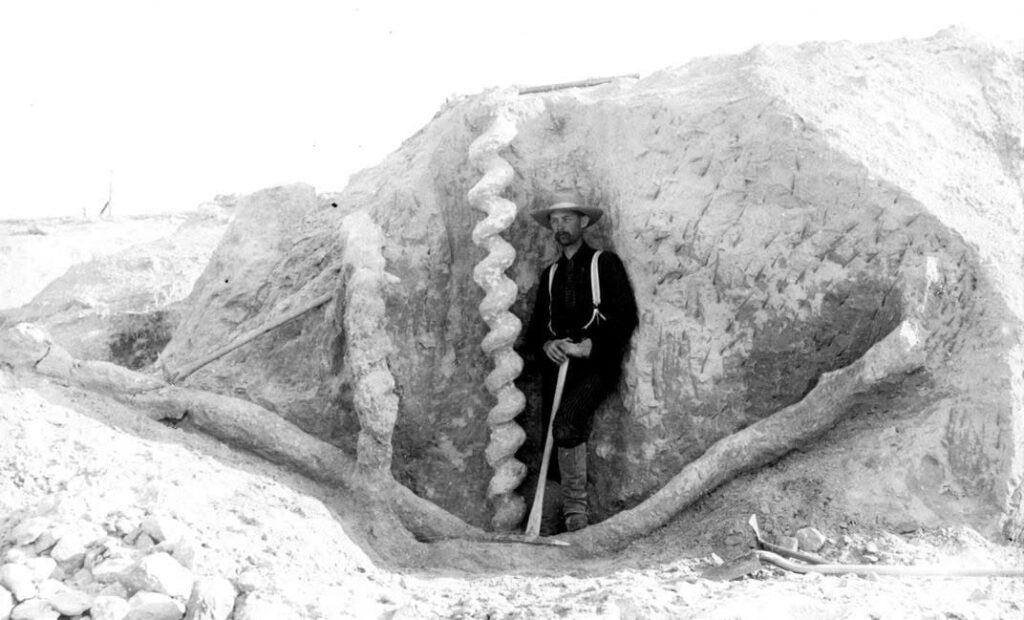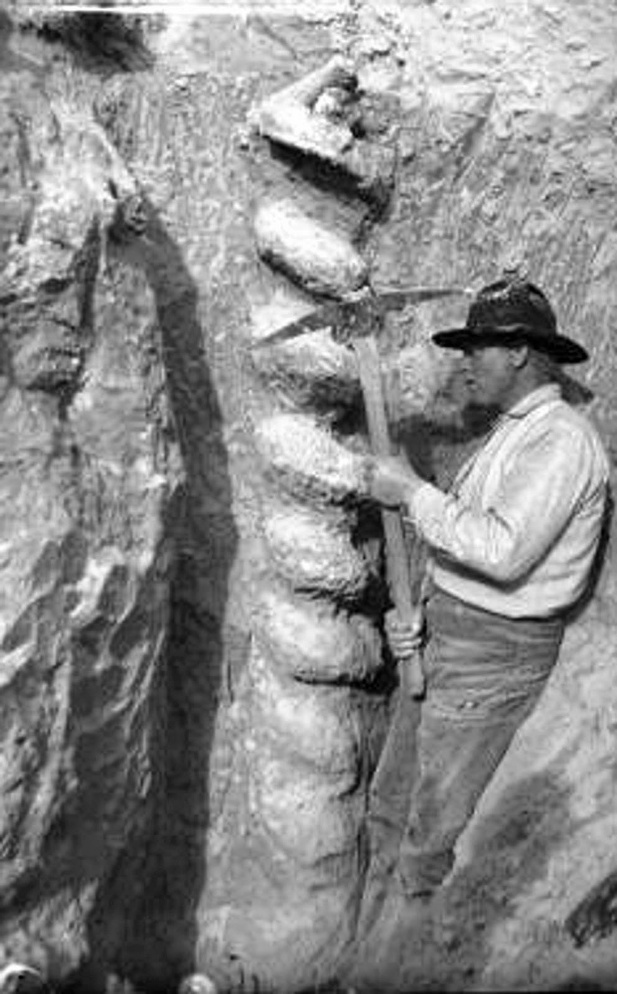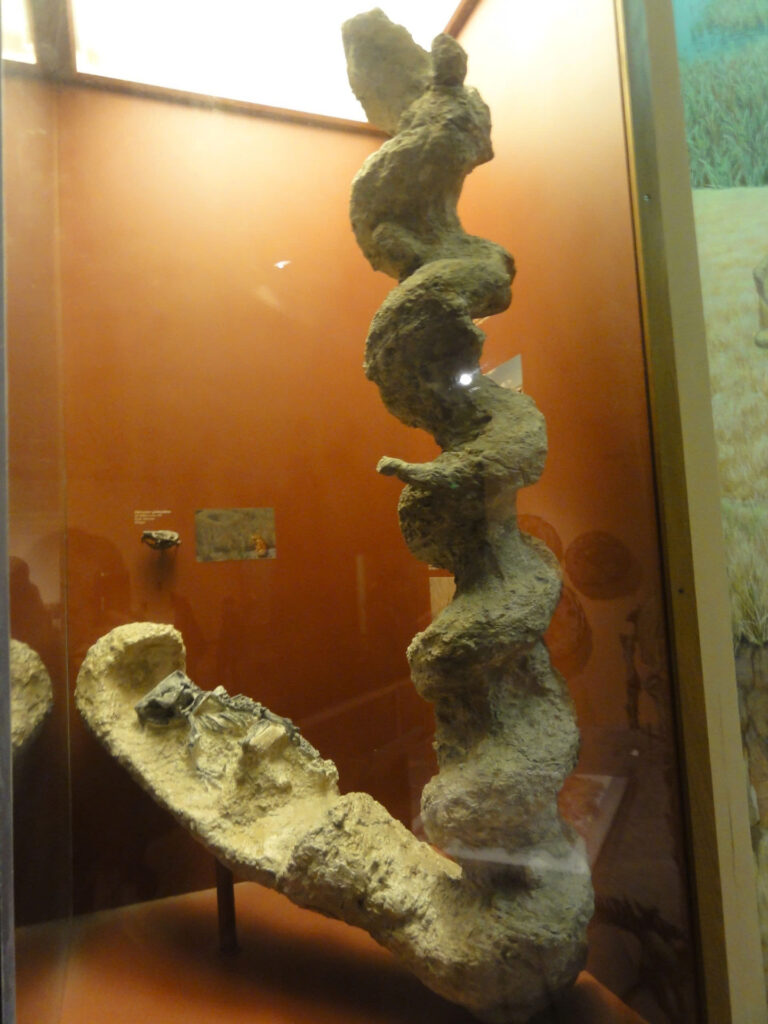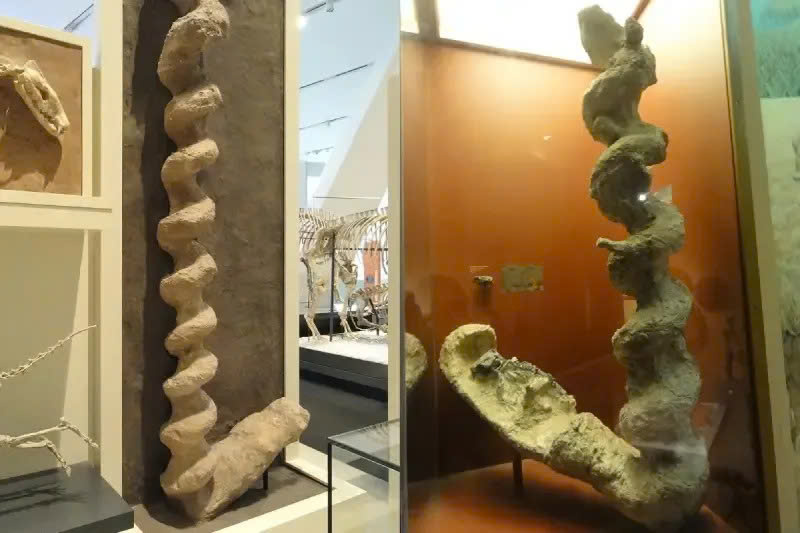Deep in the rugged badlands of Nebraska lies one of paleontology’s most intriguing mysteries—strange, spiral-shaped fossils that baffled scientists for nearly a century. These enigmatic formations, known as “Devil’s Corkscrews,” would challenge conventional thinking and ultimately reveal fascinating secrets about ancient life on the Great Plains.
The Discovery That Puzzled Scientists

In the late 1800s, geologists exploring Nebraska’s harsh terrain stumbled upon something extraordinary. Dr. E.H. Barbour of the University of Nebraska first documented these peculiar formations near Harrison, Nebraska, between 1891 and 1892. Rising from the earth like massive underground screws, these hardened spiral structures extended up to 10 feet deep into the sandy soil, resembling giant corkscrews frozen in time.
The formations were unlike anything in the known fossil record. Their tree-sized, screw-like appearance earned them the ominous nickname “Devil’s Corkscrews,” as if only supernatural forces could have created such bizarre underground architecture.
A Century of Scientific Debate
Early Theories and Wild Speculation

For decades, the scientific community remained divided about the origin of these mysterious spirals. The formations sparked heated debates and creative hypotheses:
- The Sponge Theory: Some researchers proposed they were fossilized remains of colossal freshwater sponges, unlike any living species
- The Plant Hypothesis: Others suggested they might be ancient root systems or plant structures
- The Geological Formation Theory: A few scientists believed they were purely geological phenomena, created by unusual soil conditions
Each theory seemed plausible, yet none could fully explain the consistent spiral pattern and massive scale of these underground formations.
The Breakthrough Discovery
The mystery persisted until the 1970s, when paleontologists made a revolutionary discovery. Advanced excavation techniques and careful analysis revealed the truth: these weren’t plant remains or geological oddities—they were actually elaborate animal burrows.
Meet Palaeocastor: The Ancient Architect
The Prehistoric Beaver Behind the Mystery
The Devil’s Corkscrews were created by Palaeocastor, an extinct beaver species that lived approximately 20 million years ago during the Miocene epoch. Unlike modern beavers, Palaeocastor was primarily a land-dwelling, burrowing creature rather than an aquatic animal.
Physical Characteristics
Palaeocastor was remarkably different from today’s beavers:
- Size comparable to a modern muskrat
- Elongated, slender snout adapted for digging
- Powerful incisor teeth for excavation
- Specialized limbs designed for underground construction
Revolutionary Burrowing Technique

What made Palaeocastor truly unique was its innovative approach to burrow construction. Instead of digging simple straight tunnels, these ancient engineers created sophisticated spiral-shaped burrows with remarkable precision:
- Depth: Burrows extended up to 10 feet underground
- Length: Individual tunnels could reach 7 feet in total length
- Width: Chambers expanded up to 3 feet across
- Design: Each burrow terminated in a spacious chamber for sleeping and raising offspring
The Science Behind the Spirals
Engineering Marvels of the Ancient World

The spiral design wasn’t just aesthetic—it served crucial practical purposes:
Ventilation System: The corkscrew shape created natural air circulation, maintaining breathable conditions deep underground.
Temperature Control: The spiral structure helped regulate temperature, keeping the burrow cool during hot prairie summers.
Structural Integrity: The curved walls provided superior structural support compared to straight tunnels.
Colonial Living
Archaeological evidence suggests Palaeocastor lived in family groups or small colonies. Devil’s Corkscrews are frequently found in clusters, indicating these ancient beavers established underground communities in the soft, sandy soils of the prehistoric Great Plains.
The Importance of Trace Fossils
Windows into Ancient Behavior
Devil’s Corkscrews represent a special category of fossils called trace fossils—preserved evidence of animal activity rather than the animals themselves. These behavioral fossils provide invaluable insights into how extinct creatures lived, worked, and interacted with their environment.
Beyond the Corkscrews
The study of Palaeocastor burrows opened new avenues for understanding trace fossils:
- Footprint Analysis: Studying ancient trackways and movement patterns
- Coprolites: Fossilized waste revealing dietary habits and ecosystem relationships
- Nesting Sites: Understanding reproduction and parental care behaviors
Video
Modern Legacy and Tourism
Scientific Significance

Today, Devil’s Corkscrews continue to contribute to paleontological research. They help scientists understand:
- Climate conditions during the Miocene epoch
- Ecosystem dynamics of ancient grasslands
- Evolution of burrowing behaviors in mammals
- Environmental adaptations in prehistoric species
Popular Attraction
The badlands of Nebraska and Wyoming now attract thousands of visitors annually who come to witness these paleontological marvels firsthand. Educational centers and guided tours help the public appreciate both the scientific significance and the remarkable ingenuity of these ancient architects.
Conclusion: Lessons from the Underground
The Devil’s Corkscrew mystery demonstrates how scientific persistence and advancing technology can unlock secrets hidden in the earth for millions of years. What began as a puzzling geological curiosity ultimately revealed the sophisticated engineering capabilities of an extinct beaver species, forever changing our understanding of prehistoric life on the Great Plains.
These spiral burrows remind us that innovation and adaptation have driven evolution for millions of years—and that sometimes, the most extraordinary discoveries lie right beneath our feet, waiting patiently to tell their ancient stories.

